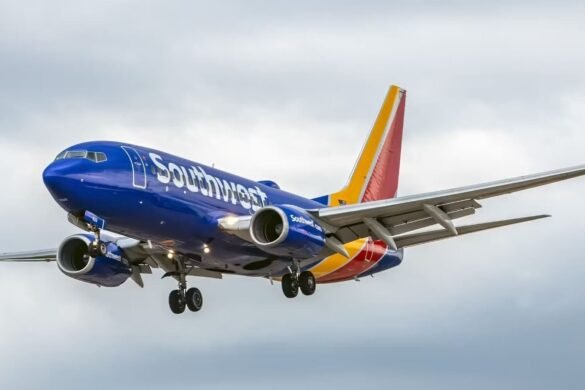Seattle – Alaska Airlines is flying high on the back of strong growth in its premium cabin offerings, but the airline is bracing for a short-term financial impact stemming from a recent IT system outage that disrupted operations across its network earlier this month.
In a quarterly update released Wednesday, the Seattle-based carrier reported a surge in revenue from its premium seating segment — including First Class and Premium Class — driven by strong demand from both business and high-yield leisure travelers.
“Premium products continue to outperform expectations,” said CEO Ben Minicucci during an investor call. “We’ve seen increased customer preference for added space, flexibility, and amenities — particularly on West Coast and transcontinental routes.”
IT Outage Dampens Q3 Outlook
However, the airline tempered its outlook for the current quarter due to the operational and financial fallout from a system-wide IT outage on July 10, which led to widespread flight delays and cancellations. The outage, caused by a third-party software failure, grounded dozens of flights and impacted thousands of passengers.
“We expect the outage to have a modest but notable impact on Q3 earnings,” said CFO Shane Tackett. “While operations have since stabilized, the disruption led to lost revenue and additional costs related to passenger rebooking, compensation, and recovery efforts.”
Alaska Airlines is currently assessing the total financial toll of the incident and indicated that it may seek reimbursement or legal recourse depending on the results of its ongoing investigation into the outage’s root cause.
Premium Strategy Pays Off
Despite the setback, Alaska’s longer-term growth strategy appears to be on track. The airline has been expanding its Premium Class seating across the fleet, while also upgrading inflight amenities and loyalty perks tied to its Mileage Plan program.
Minicucci noted that Alaska’s premium revenue per available seat mile (RASM) grew at more than twice the rate of the main cabin segment in the last quarter. The airline is also seeing improved load factors in premium cabins, aided by dynamic pricing and targeted corporate travel partnerships.
Looking Ahead
Alaska Airlines reaffirmed its full-year capacity growth target of 4–6%, though it acknowledged potential headwinds from ongoing aircraft delivery delays and elevated labor costs.
With a relatively young fleet, strong West Coast network, and improving premium mix, analysts believe Alaska is well-positioned to weather short-term challenges.
“While the IT outage is unfortunate, the underlying fundamentals remain solid,” said an analyst at Cowen. “Alaska’s disciplined approach to growth and its focus on the high-margin premium segment should continue to deliver value.”



